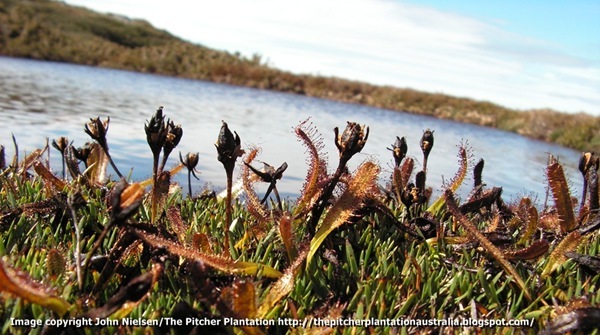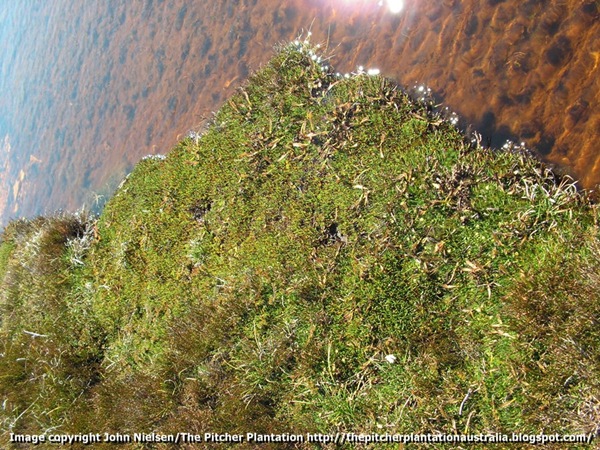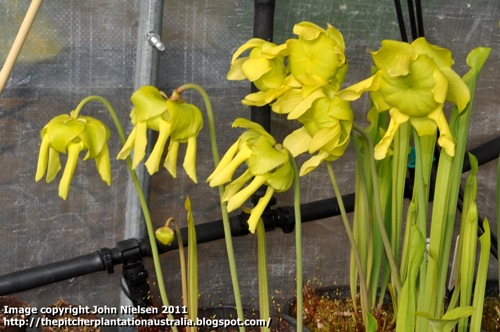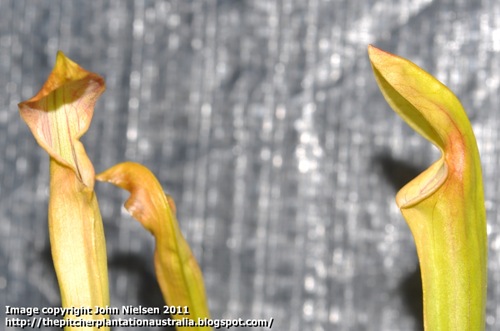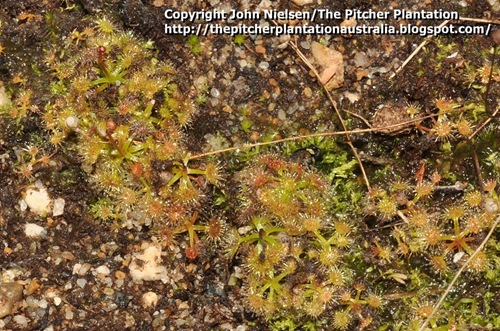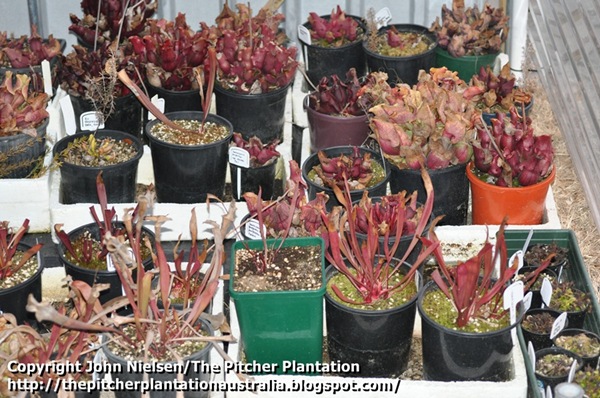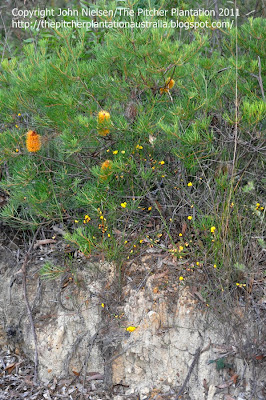The first snow of this year has fallen in the Brindabella Ranges! I managed to spend an hour up at the
Drosera peltata site at Smokers Gap (1240 meters) and took the following photos. The snowfall was admittedly very light - it is still a bit too early for anything substantial. Even so, the ACT parks service close any road as soon as snow starts to settle, so it was light snow or nothing! Being originally from a part of Australia where snow is an impossibility, any sort of snow is a novelty and not to be missed.
When I arrived, it was alternating between light snow and sleet, but some snow was lying on the ground - most of it on the hummocks of
Sphagnum cristatum. The ground is still too warm to form drifts, except in very sheltered spots and of course on the
Sphagnum hummocks.
I was very surprised to see that a small number of
Drosera peltata were still in active growth, despite it being close to freezing. Most of them were very small seedlings; the larger ones for the most part had died back to their tubers. The plants that were still around were all thoroughly wetted from the snowfall, but not burned from the cold. There had also been frost earlier in the week, including where we live at Tuggeranong (800 meters), so these plants are apparantly quite cold tolerant.
These were the largest plants I saw. They were growing in a rivulet sheltered by a fallen log from the 2003 bushfires, an awful position light-wise for photography. That I had the wrong lens on (105mm macro) did not help either. Again, these plants had been thoroughly wetted by the snow but were not burned by the cold. I will pay this site a few more visits this winter to see if there are plants growing throughout the winter.
Remember, this form of D. peltata was also growing prolifically during the height of summer.
One obvious difference from the site during summer was how wet the soil was.
Compare this photo with the same bank during summer.
Just as I headed back to the car, it resumed snowing. Again, it was only relatively light (and therefore not so easy to catch with a macro lens!), but nice to see nonetheless. Being a more tropical creature, snow of any kind never looses its novelty.
I swapped out the 105mm macro for an 18-55mm zoom, and set off down the road to where I had seen Stylidium graminifolium. At this site, the falling snow soon gave way to rather large, almost hail-like, sleet. But it was here where I found the best snow drifts, which were up to a few centimeters deep.
The only sign of the
Stylidium were a few leaves poking out of
Poa labilliardei tussocks. See if you can find the two
Stylidium plants in the top photo. Snow and lichen covered dead branches of a
Leptospermum immediately above where I found the
Stylidium
Finally, I capped of the visit by driving to the end of the Corin Forest road to Corin dam. The dam itself is only at 970 meters, while the
Drosera and
Stylidium grow higher up at about 1240 meters. It was sleeting here, but it had snowed earlier; I saw small drifts of snow in grass alongside the road at this altitude. It was snowing higher up as well. This was the view up to the foothills below where the Ginini Flats
Sphagnum heath is. I could glipmse a lot of snow on Mount Ginini further back up the road, but the only places with a clear view were on sharp corners or where there was no safe parking, so I could not photograph it.
As I was writing this, it was still snowing up in the Brindabellas. I don't doubt these sites will get a much better coverage of snow overnight. Unfortunately, the reserve is closed when snow drifts start to form on the roads, so I probably won't get a chance to photograph the
Drosera habitat under a full compliment of snow.
